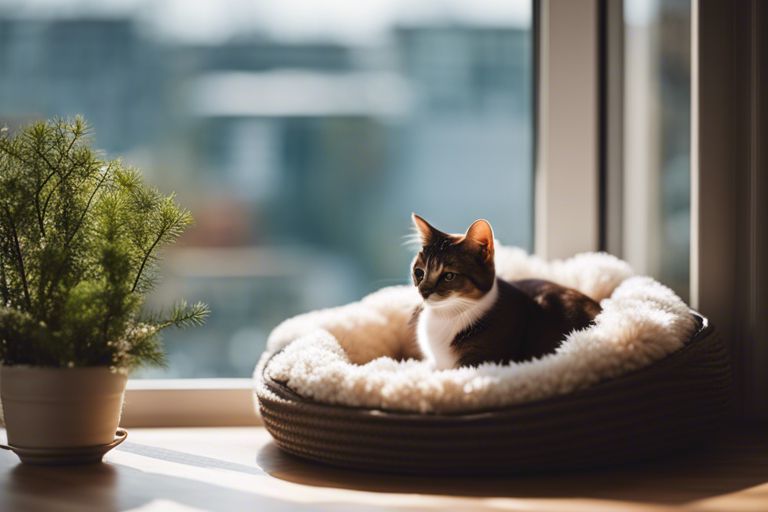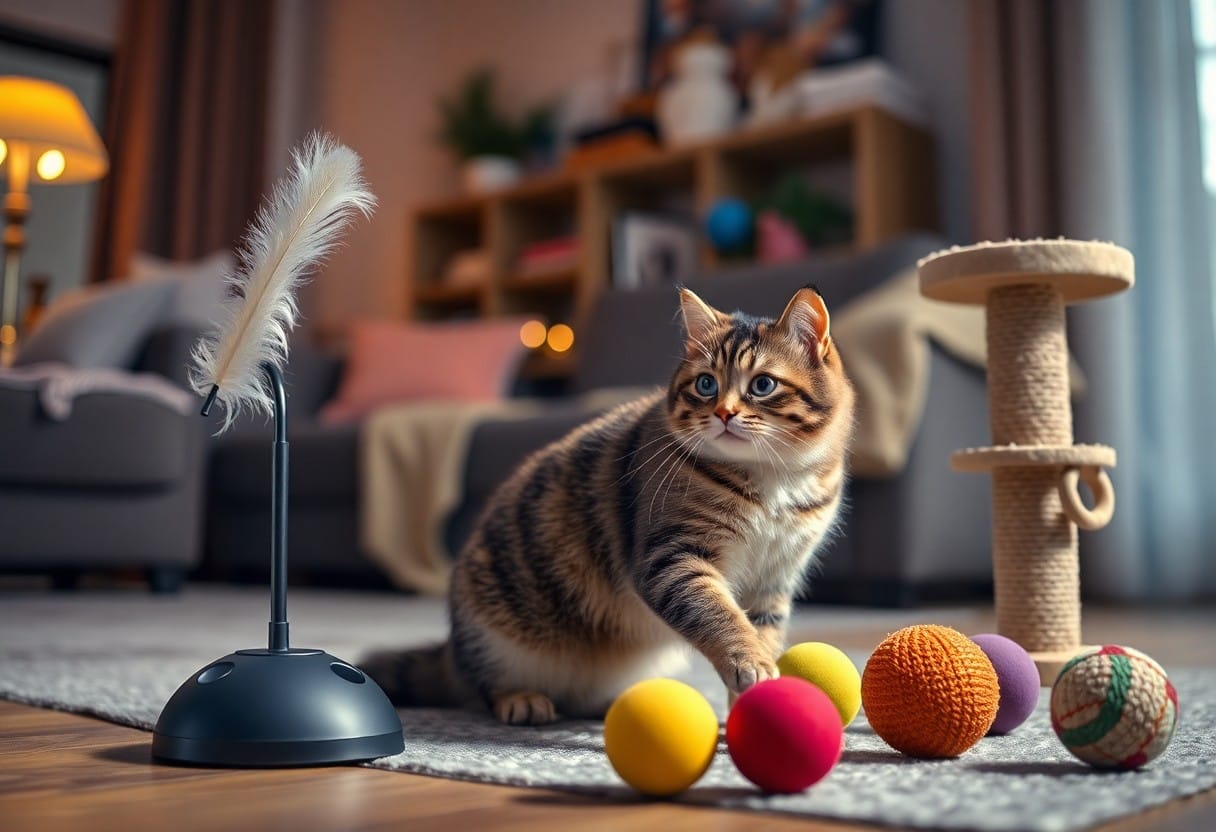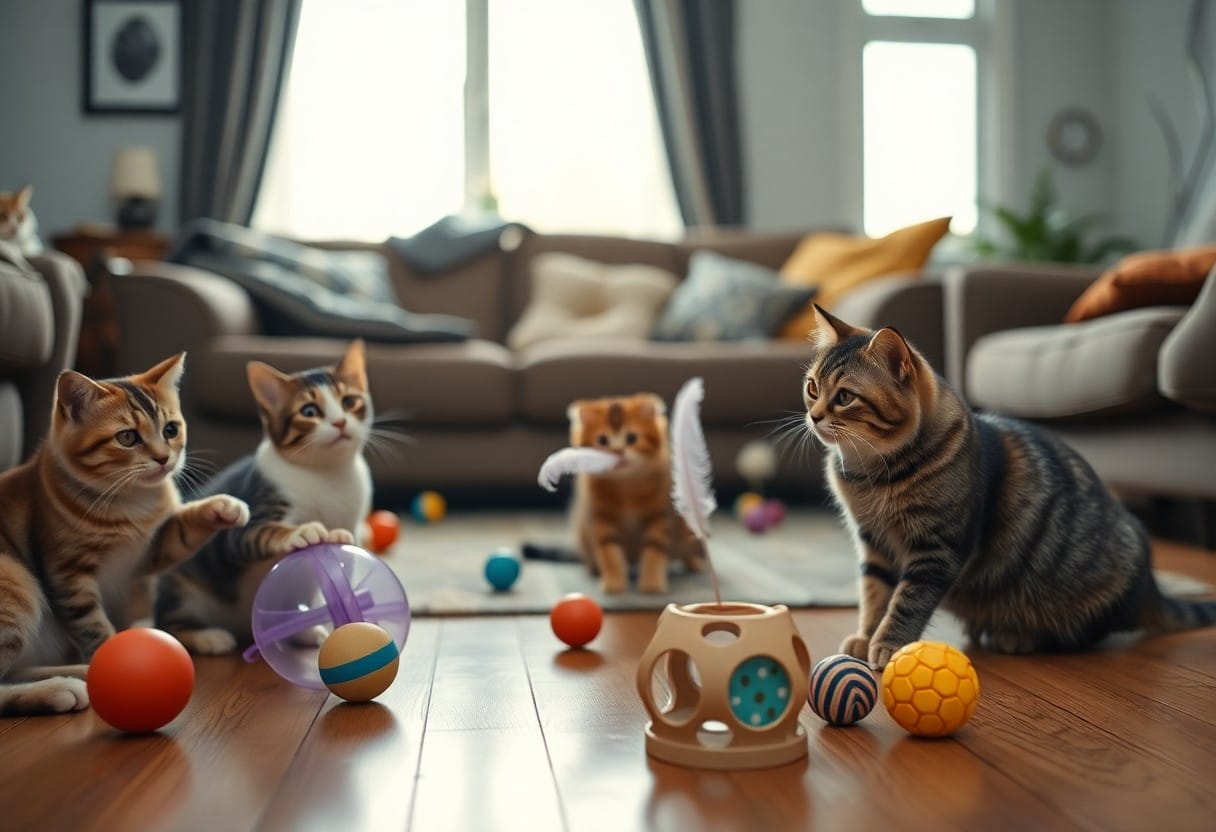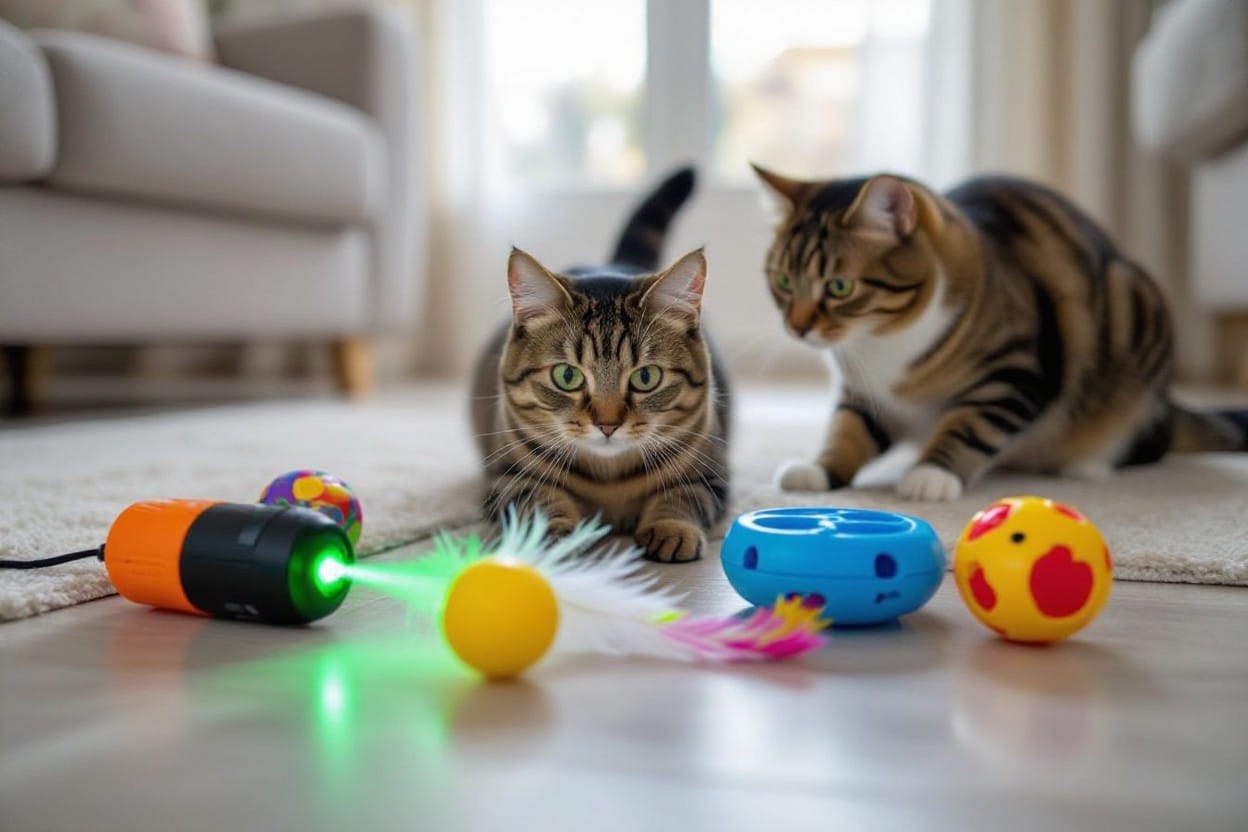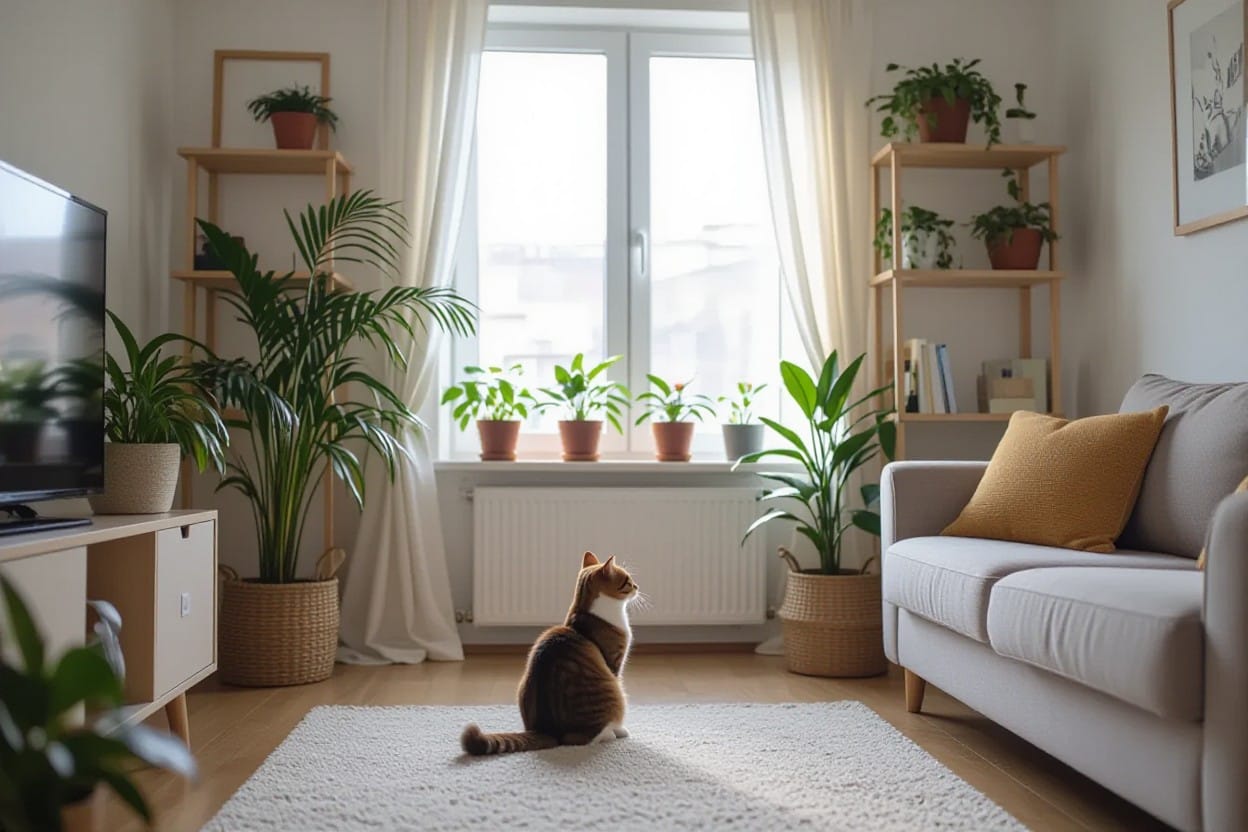Cats are curious and independent creatures that require a stimulating environment to thrive, especially when confined indoors. In order to ensure your indoor feline’s well-being and happiness, it is crucial to create a space that caters to their natural instincts and behaviors. From providing ample opportunities for play and exercise to establishing cozy resting spots, there are key elements to consider when setting up the perfect indoor environment for your beloved cat.
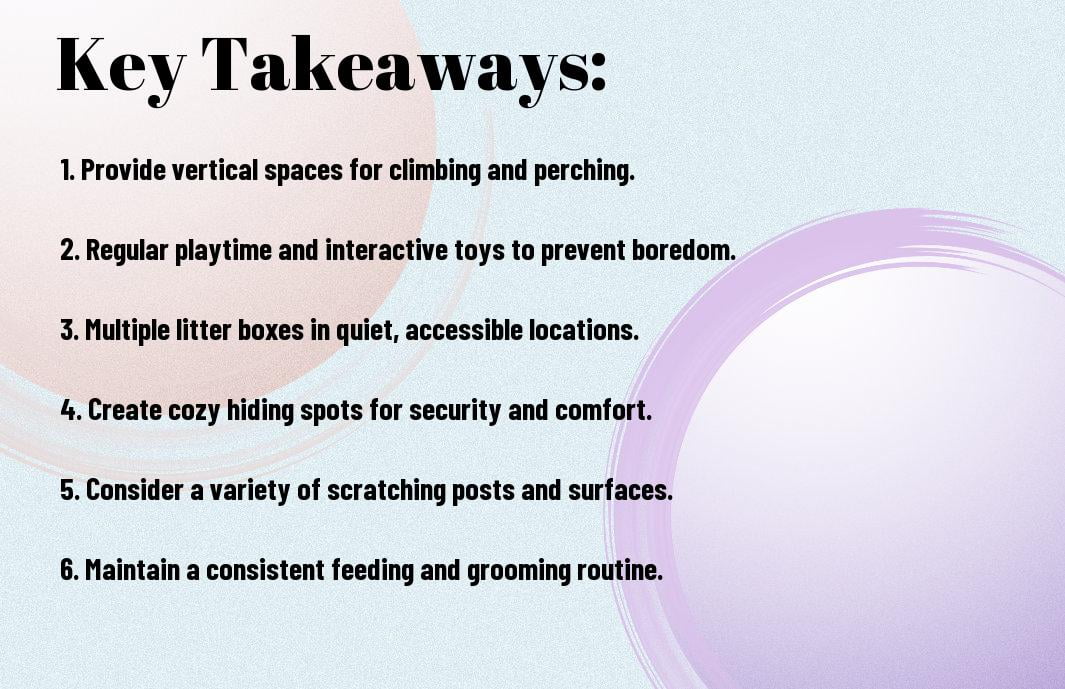
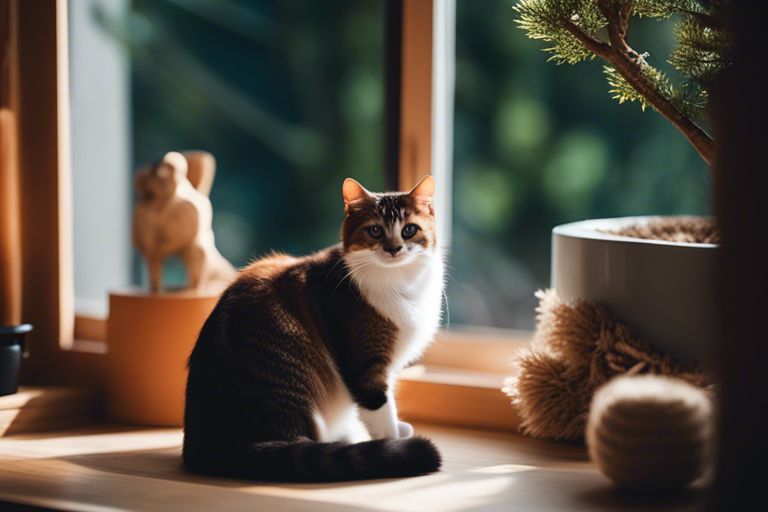
Understanding Your Cat’s Natural Behaviors
Some cats may seem like mysterious creatures, but understanding their natural behaviors can help create a harmonious environment for them in your home. By recognizing and respecting their instincts, you can ensure your indoor cat leads a fulfilling and happy life.
Instinctual Needs and Behaviors of Domestic Cats
Domestic cats have retained many of the behaviors of their wild ancestors, such as hunting, climbing, scratching, and exploring their territory. Providing outlets for these natural instincts is vital for your cat’s physical and mental well-being. Cats have a strong need for vertical space, where they can perch, observe their surroundings, and feel safe. Providing scratching posts, toys that mimic prey animals, and interactive play sessions can help satisfy these instincts.
How to Mimic Natural Environmental Conditions Indoors
An indoor environment can never fully replicate the outdoors, but there are ways to mimic natural conditions to meet your cat’s needs. Creating a multi-level environment with cat trees, shelves, and window perches can give your cat opportunities to climb and observe from different heights. Additionally, providing hiding spots, cozy bedding, and puzzle feeders can appeal to their natural urge to seek out shelter, rest, and ‘hunt’ for food.
A well-stocked environment with plenty of hiding places, scratching surfaces, and interactive toys can keep your indoor cat mentally stimulated and physically active. By understanding your cat’s natural behaviors and providing an enriched environment, you can help them lead a happy and healthy life indoors.
The Foundation of Well-being: Nutrition and Hydration
There’s no denying the importance of proper nutrition and hydration in ensuring the well-being of your indoor cat. The right diet can contribute to their overall health, energy levels, and even behavior. It’s crucial to provide your feline friend with a balanced diet that meets all their nutritional needs.
Essential Nutrients for Indoor Cats
The key to a healthy diet for indoor cats lies in ensuring they receive crucial nutrients such as protein, fat, carbohydrates, vitamins, and minerals. Protein is particularly important for cats as it aids in muscle development and overall health. Fats provide a concentrated source of energy, while carbohydrates offer fiber and crucial nutrients. Vitamins and minerals play a vital role in various bodily functions and help support a strong immune system.
Water Intake and Hydration Solutions
Wellbeing is closely linked to proper hydration for indoor cats. Cats may not always drink enough water, and this can lead to dehydration, especially in a dry indoor environment. Providing multiple water sources throughout your home and ensuring their water bowl is always fresh can encourage your cat to drink more. You can also consider incorporating wet food into their diet, as it contains a higher water content which can help with hydration.
With the right balance of crucial nutrients and proper hydration, you can ensure your indoor cat thrives in a healthy and happy environment. Remember to consult with your veterinarian to determine the best diet and hydration plan for your feline companion.
Physical Space and Territory
Creating a Spacious and Safe Indoor Territory
All indoor cats need a designated area where they can move freely, explore, play, and relax. Providing a spacious and safe indoor territory is necessary for your cat’s physical and mental well-being. Make sure the area is free of hazards and includes necessary items such as food and water bowls, litter boxes, scratching posts, and cozy resting spots. Consider using baby gates or cat doors to separate certain areas or rooms to control your cat’s movement.
Utilizing Vertical Space for Climbing and Perching
One of the best ways to enhance your indoor cat’s environment is to utilize vertical space for climbing and perching. Cats naturally love to climb and be in high places as it gives them a sense of security and control over their surroundings. Install cat trees, wall shelves, or window perches at different heights to encourage climbing and provide elevated resting spots. This not only mimics their natural behavior but also gives them a better vantage point to observe their territory.
To prevent your indoor cat from getting bored or developing behavioral issues, it is crucial to provide them with opportunities for exercise, mental stimulation, and environmental enrichment. Utilizing vertical space not only maximizes your cat’s living area but also promotes physical activity and mental engagement.
Stimulating Activities and Enrichment
Importance of Playtime and Toys
Your indoor cat’s well-being relies on more than just a comfy bed and good food—it also needs mental and physical stimulation. Playtime is crucial for indoor cats to prevent boredom, obesity, and behavioral issues. Engaging your cat with interactive toys not only provides exercise but also satisfies its natural hunting instincts, keeping it happy and healthy.
How to Rotate and Choose Stimulating Toys
On a regular basis, it’s vital to rotate your cat’s toys to keep it engaged and interested. Introduce a variety of toys such as balls, catnip toys, interactive puzzles, and feather wands to offer different textures, sounds, and movements. Observe your cat’s preferences and choose toys that cater to its individual likes and needs. Additionally, rotate toys every few days to prevent your cat from getting bored with the same ones.
Consider incorporating puzzle feeders or treat-dispensing toys into your cat’s playtime routine to stimulate its mind and provide mental enrichment. These toys encourage problem-solving skills and offer a rewarding challenge for your clever feline friend.
Comfort and Resting Areas
The Need for Quiet and Cozy Napping Spots
Quiet and cozy napping spots are necessary for ensuring your indoor cat feels secure and relaxed in their environment. Cats are known for their love of snoozing, often sleeping up to 16 hours a day. Providing them with quiet spots away from loud noises and high-traffic areas will allow them to rest undisturbed and recharge their energy levels.
Bedding and Privacy Preferences for Cats
On the topic of bedding and privacy preferences, cats appreciate having their own space where they can retreat to for a peaceful rest. Consider providing your feline friend with a variety of bedding options, such as soft blankets, plush beds, or cozy hideaways, to cater to their individual preferences.
The type of material and location of the resting area can also impact your cat’s comfort level. Some cats may prefer elevated spots where they can observe their surroundings, while others may prefer secluded areas where they feel safe and hidden from view.
Litter Box Management
Proper Placement and Maintenance of Litter Boxes
Management of your cat’s litter box is crucial in maintaining a healthy and happy indoor environment. Proper placement of litter boxes is key. Cats prefer a quiet and easily accessible location for their litter boxes. Ideally, there should be one litter box per cat in the household, plus one extra. This ensures that each cat has its own space and reduces the likelihood of accidents.
Regular maintenance of the litter box is necessary. Scoop the box at least once a day and change the litter completely every 1-2 weeks. Cats are clean animals and may avoid using a dirty litter box, leading to accidents outside the box. Cleaning the box regularly also helps prevent odors from accumulating and keeps your home smelling fresh.
Tips for Encouraging Good Litter Box Habits
One effective way to encourage good litter box habits in your indoor cat is to make the litter box a welcoming space. Place the box in a quiet, low-traffic area where your cat feels safe and comfortable. Avoid placing the litter box near noisy appliances or in areas where your cat may feel trapped.
- Provide multiple litter boxes in different areas of your home to give your cat options.
- Keep the litter box clean by scooping it daily and changing the litter regularly.
Good litter box habits can also be encouraged by using the right type of litter. Cats have individual preferences when it comes to litter texture, so you may need to experiment to see what your cat prefers. Some cats prefer clumping litter, while others prefer non-clumping or silica crystal litter. Find the type that your cat is most comfortable with to encourage regular litter box use.
- Thou should avoid scented litters as they may be off-putting to some cats.
Social Interaction and Companionship
Understanding Your Cat’s Social Needs
Keep in mind that even though cats are independent creatures, they still require social interaction and companionship. Your indoor cat may see you as their primary source of companionship and rely on you for social interaction. It’s necessary to set aside time each day to play, cuddle, or simply be near your cat to fulfill their social needs.
Introducing New Pets and Managing Multi-Cat Households
Needs
Introducing a new pet or managing a multi-cat household requires careful planning and consideration. Cats are territorial animals, so introducing a new cat to the household can be a stressful experience for all involved. It’s crucial to introduce new cats gradually, allowing them to get acquainted through scent swapping and supervised interactions. Provide separate resources like food bowls, litter boxes, and resting areas to prevent competition and reduce tension among the cats.
Another
important aspect of managing a multi-cat household is to ensure each cat has their space to retreat to if needed. This can help reduce conflicts and provide a sense of security for all the feline residents. Monitoring the cats’ behavior and providing positive reinforcements can also help establish a harmonious environment among the cats.
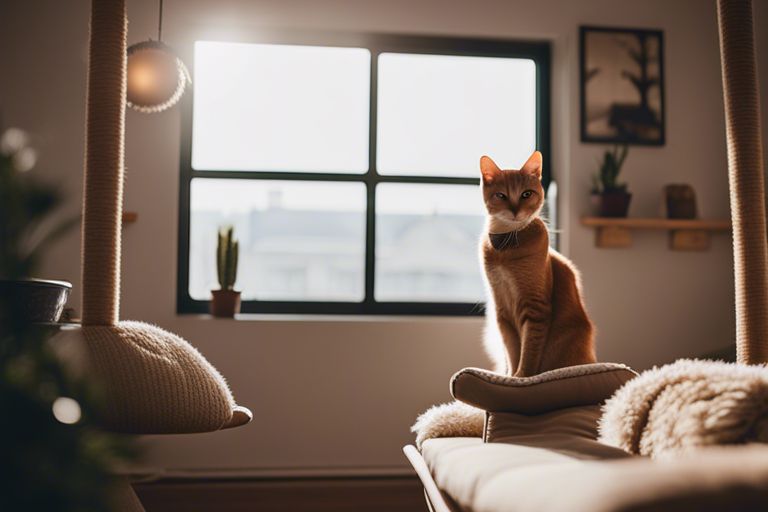
Health and Hygiene
Many indoor cats rely solely on their human caregivers to ensure they stay healthy and clean. Health and hygiene are crucial aspects of caring for your indoor cat, helping to prevent diseases and ensure their overall well-being.
Regular Veterinary Care and Preventive Measures
Regular veterinary care is vital for indoor cats to catch any potential health issues early on. Make sure your cat’s vaccinations are up to date and schedule annual check-ups with a veterinarian. Preventive measures such as flea and tick control, as well as regular deworming, can also help keep your indoor cat in optimal health.
Grooming and Handling Techniques for Indoor Cats
The grooming and handling of your indoor cat are important for their physical and emotional well-being. Regular grooming helps prevent matting and hairballs, and also allows you to check for any signs of skin issues or parasites. Proper handling techniques, such as supporting their whole body when picking them up, can help prevent injuries and build trust between you and your cat.
Plus, grooming sessions can be a bonding experience for you and your indoor cat, strengthening your relationship and providing them with the care and attention they need. Brushing your cat’s coat regularly can also reduce shedding and minimize hair around your home, helping to maintain a clean living environment for both you and your feline friend.
Troubleshooting Common Behavioral Issues
Addressing Inappropriate Scratching and Climbing
For indoor cats, scratching and climbing are natural behaviors that can become problematic if not directed appropriately. Providing a variety of scratching posts and cat trees in different textures and heights can help satisfy your cat’s instinctual need to scratch and climb. Placing double-sided tape or aluminum foil on furniture you want to protect can discourage your cat from scratching in undesirable areas. Regular nail trimming can also help reduce the damage caused by scratching.
Dealing with Boredom and Stress-related Behaviors
With indoor cats, boredom and stress can manifest in behaviors such as excessive meowing, over-grooming, or aggression. Providing interactive toys, puzzle feeders, and rotating your cat’s toys regularly can help alleviate boredom. Creating vertical spaces for your cat to explore and perch on can also provide mental stimulation. If your cat exhibits stress-related behaviors, such as hiding or avoiding interaction, try to identify and eliminate stressors in their environment.
Behavioral
Dealing with boredom and stress-related behaviors in indoor cats is crucial for their overall well-being. Ensuring your cat has a stimulating environment and plenty of opportunities for play and exploration can help prevent behavioral issues from arising. If you notice persistent changes in your cat’s behavior, it is imperative to consult with a veterinarian or animal behaviorist to address any underlying issues.
Summing up
Presently, it is vital to create the perfect environment for your indoor cat to ensure their physical and mental well-being. By providing stimulating toys, vertical space for climbing, cozy hiding spots, scratching posts, and interactive playtime, you can help prevent boredom and ensure a happy and healthy indoor cat.
Note, indoor cats rely on us to meet their needs and provide a safe and enriching environment. With the right setup and attention to their needs, you can create a space where your feline friend can thrive and lead a fulfilling life indoors.
FAQ
Q: Why is creating the perfect environment important for indoor cats?
A: Creating the perfect environment for your indoor cat is crucial for their physical and mental well-being. Indoor cats rely on their surroundings for stimulation, exercise, and a sense of security.
Q: What are the key components of a cat-friendly indoor environment?
A: A cat-friendly indoor environment includes vertical space for climbing, hiding spots for privacy, scratching posts for claw maintenance, interactive toys for mental stimulation, and designated feeding and litter areas.
Q: How can I set up vertical space for my indoor cat?
A: You can set up vertical space for your indoor cat by installing cat trees, shelves, window perches, or cat condos. These elevated areas allow your cat to climb, observe their surroundings, and relax in a high vantage point.
Q: Why is providing scratching posts important for indoor cats?
A: Scratching is a natural behavior for cats that helps them stretch their muscles, maintain their claws, and mark their territory. By providing scratching posts, you can prevent damage to furniture and fulfill your cat’s instinctual need to scratch.
Q: How can I create a safe outdoor experience for my indoor cat?
A: You can create a safe outdoor experience for your indoor cat by setting up a catio or enclosed outdoor space where they can explore and enjoy fresh air without the risks of roaming free. Make sure the outdoor area is escape-proof and equipped with shade, water, and hiding spots.
